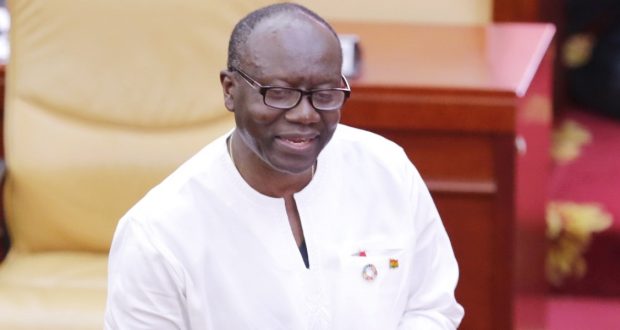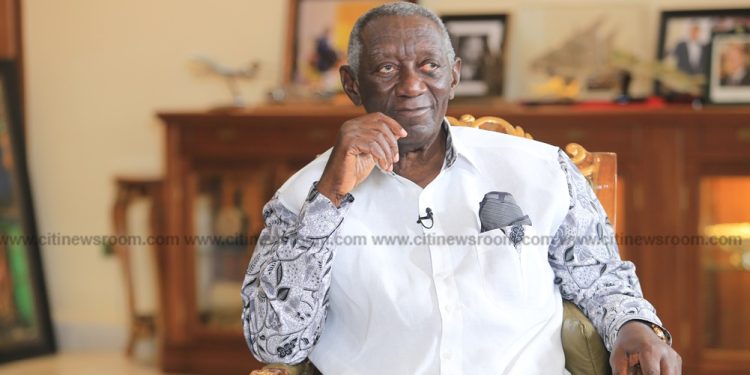A budget is a projection of inflows and outflows of an organization base on average behaviours of inflows and outflows for a given period. Budget projections are skillfully done on solid basis but not mere projections of the organizational intends.
Past average and future average suspected happenings should be seriously looked at in budget projections. The margin of variance should be closer to actual at the end of the chosen period.
REVENUE PROJECTIONS
Government of Ghana for the fiscal year 2017 presented its budget before parliament with a revenue projection of 44 billion as against 2016 fiscal year revenue project of 40 billion. Today, government revenue projection for 2018 fiscal years has raised to51 billion. What informs the increase or the basis for the revenue projections?
In the fiscal year of 2017, government was told that the projection of inflow was unattainable because, the measures that were supposed to be put in place to meet this projection were ineffective. Very little was done to increase revenue mobilization coupled with reduction of taxes as 10% reduction on spare parts.
There was a 10% increased in 2017 fiscal year revenue projection with a budget variance of 9.09% as at midyear. This is clear that government did very little in revenue mobilization because revenue was revised downward by 3 billion representing 6.81% of projected revenue for 2017 fiscal year.
Government over relied on oil revenue for the fiscal year 2017.Government was aware that we will not able to meet that revenue target but projected it because of the capital intensive programmes government wanted to undertake.
These are; FREE SHS, one village one dam, one district one factory, roads, health, goods and services etc. Today, government has projected unattainable revenue to an amount of 51 billion. This is as a result of government inability to undertake the expenditure items in the 2017 fiscal year like 80% arrears of free shs allocated amount (400 million), 55 factories for the 2017 fiscal budget, over 30 dams for the three northern regions etc. Government is expected to defer these programmes to the 2018 fiscal year, hence shooting the revenue to 51 billion.
EXPENDITURES
It is the wish of every government to reduce expenditure or be prudent in expenditure. This has always failed because of pressure from citizens to meet their needs, particularly elections years.
SECURITY
This is surprising that government has not budgeted for security for the 2018 fiscal years despite the pockets of misbehaviours of government own trained youths who keeps rampaging and attacking appointee. There have also been an increased in cyber fraud and mobile money fraud not forgetting of land guard menace. Everybody expects government to address these cankers in the 2018 budget because citizens are worried.
EDUCATION
Government seems to paint the picture as though free SHS is the only serious programme in the educational sector. Government pays very little attention to other areas as technical and vocational institutions when government believes in industrialization.
FREE SHS
Government in the 2017 fiscal year projected and expenditure of 400 million for the first term 2016/2017 academic year. At the end of the fiscal year, government expenditure is over 500 million for the first term alone. It is not surprising that government projected expenditure for 2018 fiscal year for free SHS is over 1.5 billion. Haven noticed that there is an increased of 32% enrollment for the 2017/2018 academic year. It is again clear that government will spend more than the projected in that government needs to undertake associated cost as construction of classroom, dormitories, dining halls etc. The set up of voluntary educational fund has come to support the fact the free SHS funding is troubling government. It will be dangerous should government fail along the line to undertake free SHS.
ONE DISTRICT ONE FACORY
Government in its 2017 fiscal year projected amount of 800 million to undertake 55 factories which is heavily driven by the private sector as we were made to believe. As we speak, government has not been able to create a stimulus for the private sector to set up these 55 factories. Hence, there was a budget deficit of 6.3%.It tells you what through as low revenue mobilization cum competing demands. It is therefore clear that we expecting not less than 100 factories by trend analysis in the 2018 fiscal year. But it baffles me most when the projected amount for this programme has be dropped to 40 million in the 2018 budget with a stimulus package to create enabling environment figure at 236 million. This is to tell us that the one district one factory policy is purely private driven. Failure to achieve this by government will mean government has set its up to fail in creating these factories.
This runs through other expenditures in the various sectors as health, agriculture, roads, goods and services etc.
TAX (IMPROVING DENESTIC RESOURCE MOBILIZATION)
Government with a liberal background believes in the reduction of tax in the corporate sector to enable them expand and create jobs. And was not surprising when government started reducing and scrapping off some taxes particularly the 10% special import duty on spare parts.
The basis for taxation is not only for revenue mobilization. Taxes are also put in some places for the purpose of re allocation of national resources and redistribution of national resources. Hence, there is not like “nuisance” tax. Of course taxes that are put in place for a particular purpose other than revenue mobilization should be scrapped. Government reduce and scrap taxes at the time that it is doing very little to increase revenue mobilization and keeps on missing its revenue projections. Government prefer borrowing within and without to taxation methodology.
CORPORATE TAX
The move to reduce corporate tax by government to enable these entities to increase their retain earnings so that they can create jobs for the teaming unemployed youth is unattainable. Government seems to believe so much in the corporate entities for jobs creation. That economic model seems not to work in a country like Ghana. 25% corporate tax to be reduced to 20% will not provide the intended jobs by government in the short to medium term.
Corporate entities do not employ because they have a wide profit margin. Some are vision and profit driven. Even if the make profit, some pay amount is not competing enough with the public sector. Besides, technology is a factor of unemployment because one person could do three people’s work. Hence, the rate of growth will not correspond to the rate of employment.
The move by government to give tax holidays to young entrepreneurs is a good move to solving the unemployment problem in the country. All that government needs to do is to set off the non performing loans in the banking sector to enable the banks to give out credit facilities to these willing young entrepreneurs. Bank of Ghana should put out favourable monetary policies to champion this policy.
Government has been manifesto driven in its projections and that has been its set back in missing target. Reduction in corporate tax will not yield job creation but government nerds to tax these corporate entities to create the job itself. The 10% reduction on spare parts is a clear example. The intended purpose has not been achieved as reduction in spare parts price. Government needs to put in place technology to prevent avoidance of tax in the corporate sector and informal sector so the appropriate tax methodology can be applied on their income.
UTILITT & ENERGY
We just struggled in settling debts in the energy sector 2.4 billion, and here we are announcing reduction in utility tariffs. 13% reduction for residential is good news but not sustainable. The problem is, if even it is sustainable why 11% for the manufacturing and 21% for the industries.
The manufacturing sector is indigenous driven and stand the chance of creating jobs for youth attracts 11% and the industries which is foreign driven attracts 21%.
The rate of consumption power is not the same. The manufacturing sector consumes more than the extracting sector. As to whether government has the power to reduce utility tariffs or not is a matter of legality. PURC will determine that as events unfold along the line.
MACROECONOMIC (KEY PERFORMANCE INDEX)
It is shocking why the finance minister choose to pick GDP rate 7.8% for the second quarter and inflation rate 11.6% for the third quarter as achievements in the 2107 fiscal year. What an inconsistency of base period.
A GDP that is largely grown by the performance of the oil sector should not be celebrated much.
Non-oil GDP growth rate at 4.5% of which the services sector is responsible about 2.3% speaks about how slow our economy grows excluding oil and foreign participation. The services sector is largely move by foreigners. GDP in general shows how eligible we worth and the level of guarantee we can offer in the capital and money market.
INFLATION
Inflation is dropping and is currently at 11.6% but there is no corresponding reduction in prices. The petrol price is increased by 10% and diesel by 8%. The drop in inflation is not as a result of government spending but government inability to accrue the targeted revenue to spend. This is because, inflation is dropping at the time the exchange rate to the major trading currency is at GHȻ 4.45 to the dollar.
CONCLUSION
Government projected expenditure is 62 billion as against its projected revenue 51 billion for the 2018 fiscal year. The projected budget deficit was at 6.5% of which government did 6.3% deficit. This is as result of government inability to undertake its projected programmes, policies ,and projects because it could not meet its revenue target. Government is likely to go beyond the projected deficit rate by the end of December 2017.
In the 2018 fiscal year, the projected deficit of 4.5% will not be met if government wants to undertake the stated expenditure items in the 2018 fiscal year. 2018 fiscal year comes with a lot of expectation ranging from capital to recurrent expenditure including the 1million for each constituency which stands the possibility of causing government to spend more the project.
By: Gandiibu Naah Evans
 Public Agenda NewsPaper Ghana's only Advocacy & Development Newspaper
Public Agenda NewsPaper Ghana's only Advocacy & Development Newspaper






